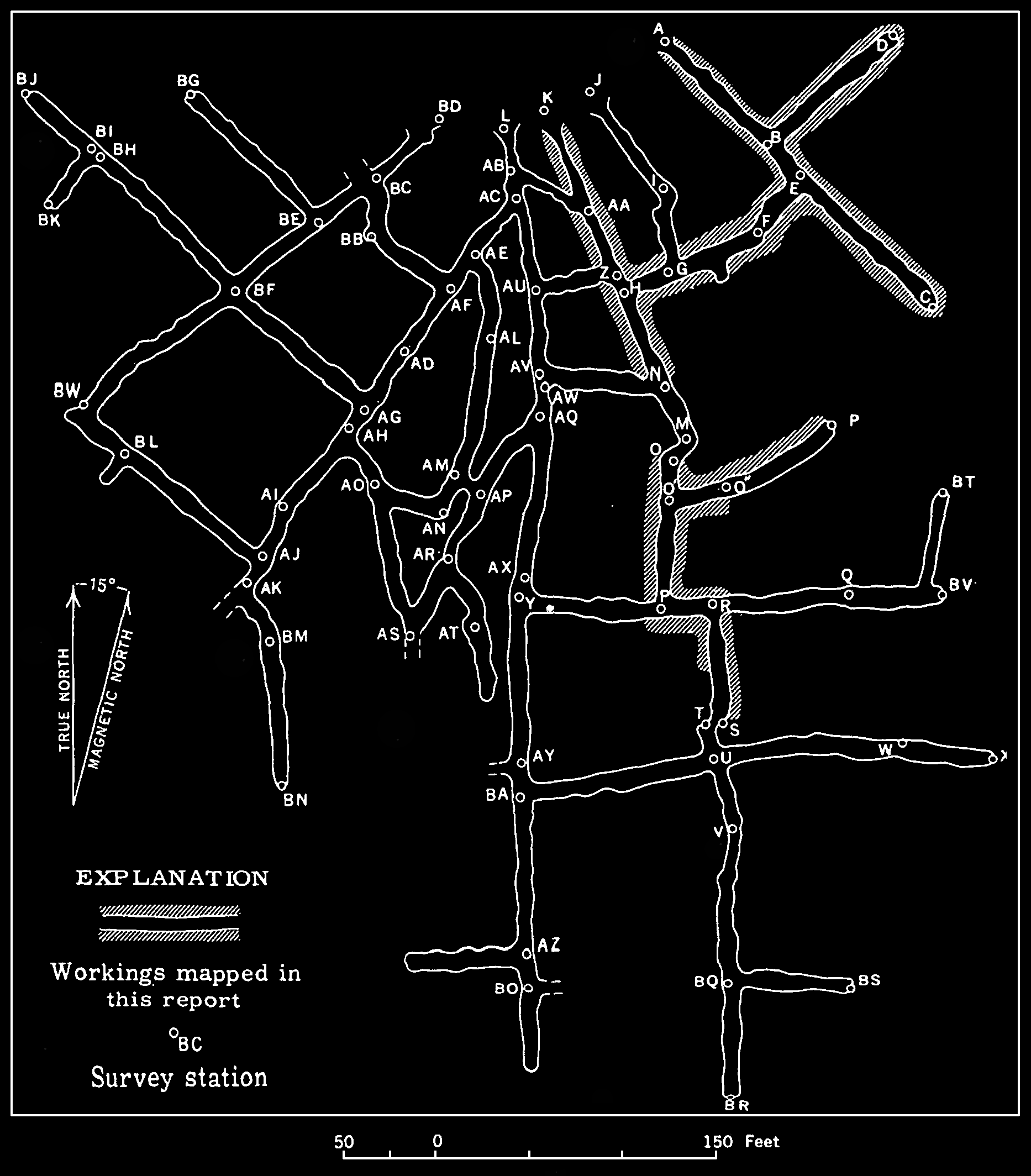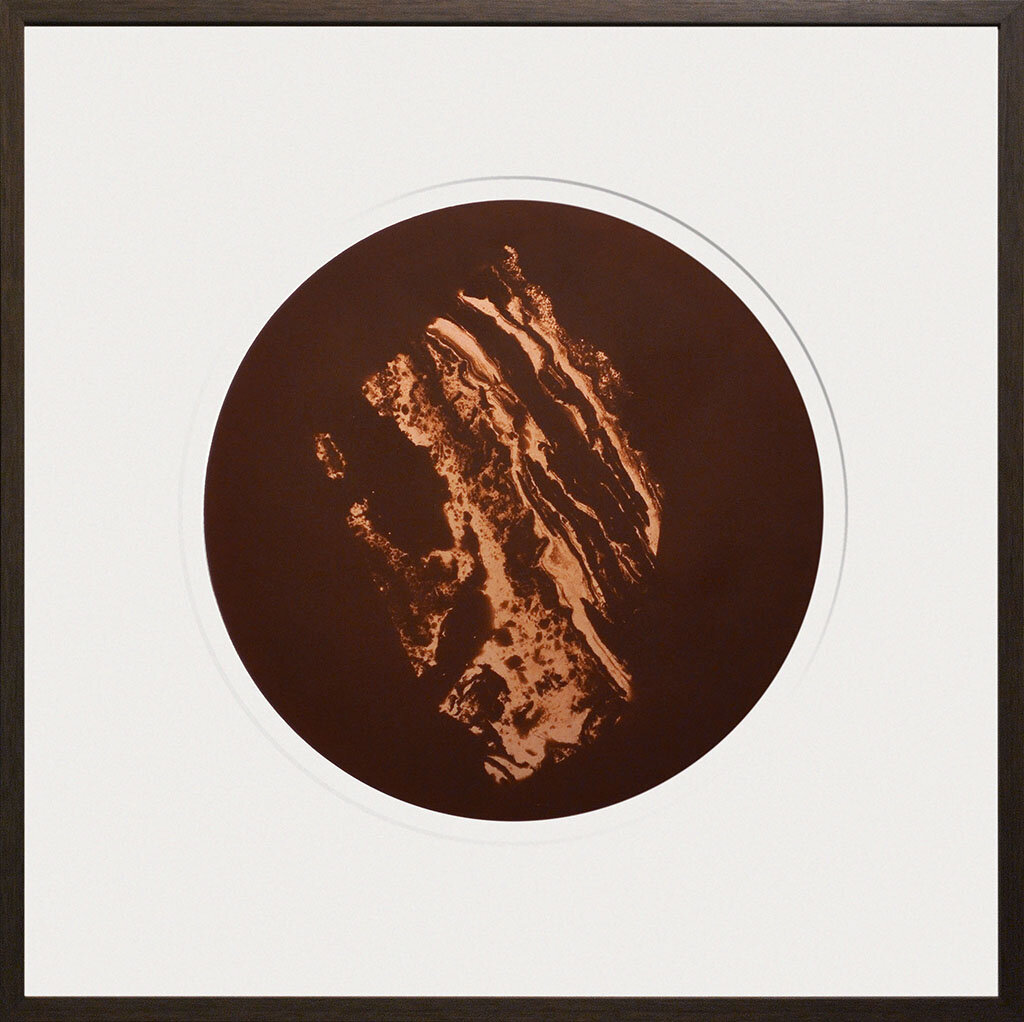Uraninite, Happy Jack Mine, White Canyon District, Utah, USA
15”x15” Circular Uranotype from uranium autoradiogram
Unique uranotype available.
The uranium in the Happy Jack mine occurs as bedded deposits, as replacements of "trash" accumulations, and as replacements of larger wood fragments. The principal uranium mineral at the Happy Jack mine is uraninite, which can be found in this deposit with high specific gravity (9.1) and purity greater than 90 percent UO2. The bedded deposits occur in siltstone beds and along the contacts between sandstone beds and between beds of sandstone and siltstone. Uranium minerals extend upward into the crossbeds of some of the sandstone above these deposits. These bedded deposits range from a knife-edge to more than thirty centimetres in thickness.
Emplacement of "trash" accumulations is one of the most widespread occurrences of uranium in the mine; about 40 to 50 percent of the trash has been replaced by uranium and copper minerals in the part of the mine studied. The replaced material appears to have been small wood fragments, other plant remains, and organic material consisting of fragments too small to identify. Deposits of this type range from millimetres to over one meter thick. Some of these areas also contain coal seams, but replacement of the coal appears to have been negligible. In places uraninite has replaced larger fragments of wood, as well as seams and pebbles of claystone and siltstone, where it partly fills the interstices between quartz grains and fills microscopic fractures cutting the grains. The largest replaced wood fragments found at Happy Jack were about one meter long and ten centimetres inches in diameter.
This unique sample shows sedimentary settling of aqueous uraninite in sandstone, with lovely banding on uraninite and base rock.
TECHNICAL NOTES:
Negative: Exposure: 48 hours / Film: Kodak T-MAX 400 / Processing: Pyro-Metol-Kodalk, Normal development
Interpositive: Ilford Cooltone FB 16x20, Ansco 130 paper developer
Internegative: created using Agfa Repromaster 20x24 camera with Arista Lith film and custom continuous tone hand tray-processing.
Print: Double coating with 24hr maturation, K₃Fe(CN)₆ processing. While this print was made as part of a limited edition series, it is unknown when it may be possible to print any more.



